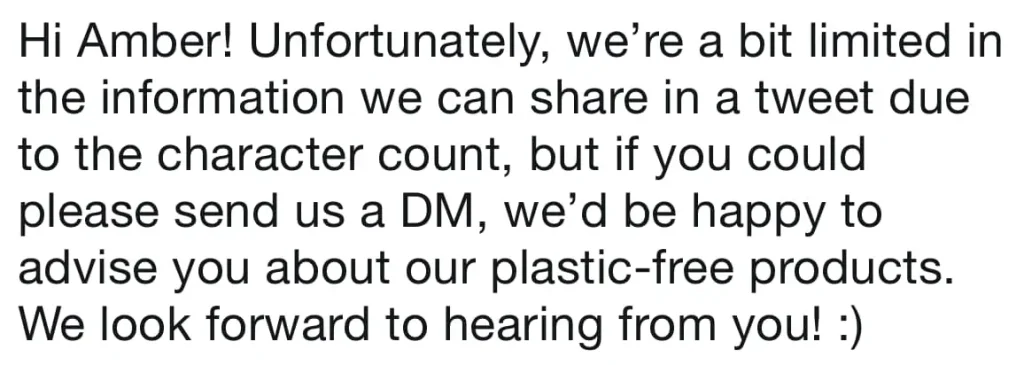How Can Customer Care Survive the Plastic Storm in Our Teacups?
Written by:
It came as a shock to the British public: our beloved teabags contain plastic. As if plastic whales, real fur sold as fake and monkeys abused as part of VW Dieselgate weren’t enough, one environmental scandal seems to follow the next.
The role of social media
Social media provides a public forum for people to ask difficult questions of their favourite brands. A quick tweet to a company’s Twitter account can shed light on the critical issues we hear about in the news. And sure enough, it didn’t take long till we saw people post questions such as:
“Love [brand] but don’t love needless #nonrecyclable #plasticpackaging. There must be an alternative?”
“What plans do you have in place to omit the use of plastic in your teabags?”
“I’ve just discovered there is plastic in your teabags and I’m horrified! I’ve been putting them in my compost for years as I thought they were biodegradable — is this not the case?”
Here at From Scratch, we encourage this kind of dialogue because we believe in a true exchange between business and society. It’s a concept that’s sometimes called ‘public value‘ or ‘social value’. Joe Kaeser, President and CEO of Siemens AG, wrote about the idea for the 2018 World Economic Forum:

The risk of social media
That said, we’re all too aware of the fact that such conversations on social media can go wrong. And some of them did, on this occasion. Just take a look at these examples and how they make you feel. (We’ve taken off the Twitter handles to protect the brands.)




Not quite feeling the love? We weren’t surprised to see that these customer service teams got a bit of stick for their answers. John, Amber and the others are engaged fans of these tea brands, or they wouldn’t have asked about those details in the first place. They expect — and deserve — responses that honour that commitment. So what can you do if you suddenly find yourself in the midst of a public debate like this?
3 things that will help your customer service team weather the storm
We’ve got two Do’s and one Don’t.
1. Don’t turn advisors into press release bots
The four replies above all have a few things in common:
- They’re safe.
- They’re repetitive.
- They use expressions such as “we’re actively developing fully biodegradable, plant-based alternatives to plastic.”
- They don’t contain much information at all.
- They’re tone-deaf.
Those are all sure-fire signs of a press release being misused as fodder for the customer service team. And it stinks. Nobody talks like those tweets. They sound disingenuous, dishonest, dispassionate — how can we expect that kind of reply to reach the hearts of passionate, eco-conscious tea drinkers? In situations like this, a smiley face stuck on to a robotic reply can come across as fake attitude — a desperate attempt to stay chipper while all around you the boat is sinking. And most customer care teams we’ve ever met know it. They know such messages won’t fly, but they use them anyway because they see no alternative. What could be worse for morale than asking people to do something they don’t believe in — and then measuring them on the resulting customer feedback? So do your customers and your teams a favour. When crisis hits, don’t give your customer service team a hand-me-down script from PR or Corporate Communications. Instead:
2. Do break down the barriers between your teams
PR, Corporate Communications, Legal, Manufacturing and Customer Service all have very specific expertise for dealing with difficulties such as this teabag example. None of those teams can solve the problem very well on their own. The problem is, each of those departments sees the problem from a distinct perspective. Plastic used in teabags poses a very different challenge for a supply chain manager compared to a PR expert or a company lawyer. And the customer has a different, external view of things altogether. Breaking down such silos takes time and commitment, so it’s not a quick fix. But an experienced team coach will be able to stretch each department into an understanding and appreciation of all departments involved — and you’ll start to see a difference after a single session. Over time, relationships between teams improve. There’s more collaboration even when nothing’s hit the fan. As soon as teams work together, a truly customer centric response becomes possible because now, people are pooling their talents, intelligence and experiences. We can’t know for sure, but we suspect that the companies behind these tweets were a bit further along in that journey:




What makes these better than the previous examples?
- They say sorry.
- They thank the customer specifically for their feedback, not just generically for getting in touch.
- They use words you’d actually say — such as “we’re working hard to change this.” (Although “environmentally sustainable packaging” is still a mouthful!)
- They contain a bit of concrete detail, and therefore the information feels more open and genuine. They mention time frames and specific procedures. Naming the type of plastic (polypropylene) shows that the customer care team are knowledgeable about these things. The more transparency, the better!
- They talk confidently about other teams and how information is shared between them.
3. Do enroll all teams in the task of making the world a better place
Some companies have mastered such conversations about difficult topics. People from all teams can explain why they produce in China, use animal hides or how come their soaps are not 100% organic. It’s wonderful to experience the cultures of such companies. That’s because everyone is “enrolled” in making the world that bit better through their work. “Enrollment” is a term from the fabulous book, The Art of Possibility by Rosamund Stone Zander and Benjamin Zander:
Enrolling is not about forcing, cajoling, tricking, bargaining, pressuring, or guilt-tripping someone into doing something … Enrollment is the art and practice of generating a spark of possibility for others to share. In the Middle Ages, when lighting a fire from scratch was an arduous process, people often carried about a metal box containing a smoldering cinder, kept alight throughout the day with little bits of kindling. This meant that a man could light a fire with ease wherever he went, because he always carried the spark.
If we all share our sparks, we’ll light up even the darkest conversations.
And if you’d like some help managing your own teams’ responses, do let us know.
We’ve got the coaching experience, copywriting skills and change management tools to “enroll” your people and make your brand crisis-ready.
